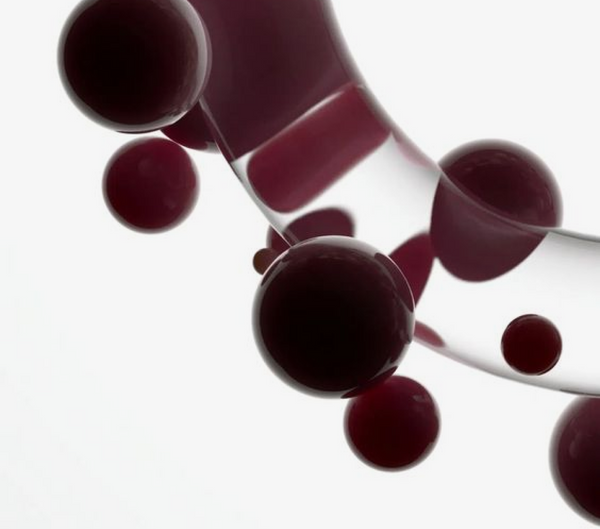Acid treatments can sound intense. You may be wondering if they’re even safe for your skin. Well, we’re here to tell you that you have nothing to fear from this skincare ingredient.
Skincare acids are different from those toxic barrels of green juice you see in the movies. In fact, most acids aren’t even green at all.
Chemically speaking, acids are chemical compounds that fall below a 7 on the pH scale. At the very bottom of the scale are strong acids like stomach and battery acid, but lemon juice only has a pH of 2 or 3, and milk is at 6. We trust these liquids, but they’re technically acids too.
Acids aren’t just safe for your skin; in many cases, they are beneficial. Glycolic acid peels are a popular skincare treatment for this very reason: this acid can dramatically improve the look and feel of your skin.
Today, we’ll break down the skin peel and explain everything you need to know about the acid-powered treatment.
What Is Glycolic Acid?
Glycolic acid is a chemical exfoliant that was first discovered in the 1850s, although it didn’t become a popular skincare ingredient until less than 50 years ago. This acid was
Glycolic acid is the smallest molecule in the AHA family (more on that later), meaning it is exceedingly equipped for exfoliation.
Because the acid is only 76 g/mol (for reference, hyaluronic acid can weigh up to 7 million g/mol), it can slip through tiny gaps in your skin’s moisture barrier to get to work breaking chemical bonds and shedding dead skin cells from the surface of your skin. This function is what smooths your skin during a glycolic acid peel.
How Do Acid Peels Work?
Chemical peels, also known as acid peels, are a type of facial that leverages the power of skincare acids to deeply exfoliate the skin.
These acids are known as chemical exfoliators, and they have a cleansing force that goes far beyond the ability of physical exfoliators like face scrubs or dry brushes. This makes chemical peels a more effective exfoliant than physical treatment options.
Most often, you receive a chemical peel from a licensed esthetician, dermatologist, or other skincare specialist. Your provider will first clean your skin and prepare it with an astringent solution that will prime your face to soak up the benefits of your peel. Then, they will apply the skincare acid solution directly to your skin.
When the acid goes on, you might notice your skin starts to feel warm or even tingle. This is a sign that the peel is working.
Remember that the skincare acid is there to break chemical bonds between old skin cells. Essentially, it’s creating controlled wounds on the surface of your skin… and that can come with a bit of discomfort. However, it shouldn’t be overly painful. If you have questions or concerns about the sensation of your chemical peel, you can always ask the esthetician providing the treatment.
In the days following your treatment, you’ll see evidence of these broken chemical bonds. Patches of old skin will literally peel away from the surface, giving chemical peels their name.
What Are the Best Skincare Acids?
Glycolic acid is one of the most popular skincare acids when it comes to acid peels and facials. However, it’s not the only one out there. There are actually a variety of different skincare acids you can choose from to introduce these facial benefits to your skin.
Generally speaking, skincare acids are broken down into two main categories: alpha-hydroxy acids and beta-hydroxy acids, or AHAs and BHAs for short.
What Are Some Common AHAs for Skin?
Alpha-hydroxy acids are exfoliating skincare ingredients that smooth the surface of your skin by loosening the chemical bonds binding old skin cells to your face. These skin cells (if they aren’t dead already) can weigh down your complexion, leading to dull skin, unwanted texture, and various fine lines and wrinkles. This makes AHAs popular in anti-aging skincare treatments.
Examples of AHAs include:
- Hyaluronic Acid: This acid is known for its ability to hydrate your skin.
- Malic Acid: This acid is known for its ability to brighten your complexion.
Glycolic acid is also an AHA.
What Are Common BHAs for Skin?
Beta-hydroxy acids also work to exfoliate your skin, but they do it in a different way. Instead of polishing your skin’s surface, they penetrate deep into the middle layers of your skin to root out impurities and treat your skin concerns at the source. This makes BHAs popular for blemish treatments.
Examples of BHAs include:
- Salicylic Acid: This acid is known for its ability to address breakouts and blemishes.
- Tropic Acid: This acid is known for its ability to reduce excess oil.
3 Benefits of Glycolic Acid Peels
You might be wondering why you should choose a glycolic acid peel over any of the other trusted skincare acids. Well, it all comes down to what benefits you’re looking for.
Each skincare acid has its own suite of superpowers that it can deliver to your skin. When it comes to glycolic acid, this ingredient has four main benefits.
1. Exfoliates Your Skin
We’ve already talked about it, but a benefit this good deserves to be repeated. The largest advantage of glycolic acid peels for your skin is their exfoliation power.
As an AHA, glycolic acid penetrates the skin to detach old and tired skin cells clinging to the surface and contributing to skin concerns like texture, wrinkles, and even some blemishes. By cutting away this dead weight, you can breathe the life back into your face and achieve smoother, more even skin.
2. Minimizes the Look of Signs of Aging
The other main benefit of glycolic acid peels for your skin is their function as an anti-aging skincare treatment.
Because glycolic acid, as an AHA, works on the surface of your skin, it’s able to directly address the look of fine lines and wrinkles on the top layers of your skin. When glycolic acid loosens the chemical bonds between old skin cells, it takes with it the lined look of these sun-damaged cells. Essentially, it pulls off the wrinkled skin to reveal the fresh layer waiting beneath.
3. Lightens the Appearance of Dark Spots
Glycolic acid peels are most known as skincare treatments for exfoliating your skin and blurring fine lines and wrinkles. However, they are good for more than just that. Another dare we say underrated benefit of these chemical peels is its effects on pigmentation issues.
Pigmentation issues result from the overabundance of pigment (or melanin) in the skin. While some extra pigment — like the kind that causes freckles — is nothing to worry about, this overproduction can quickly get out of hand and cause larger dark spots and patches of darkness on the skin.
Glycolic acid targets these dark spots by fading their appearance, supporting an even, glowing complexion.
Are you ready to give a glycolic acid peel a try? While you can always see an esthetician in person, we know that not everybody has time for an intense dermatological procedure every few months. That's why we’ve created a skincare product that will deliver the same results from the comfort and convenience of your own.
Our Green Apple Peel Sensitive Exfoliating Mask combines the strength of three AHAs (glycolic acid, hyaluronic acid, and malic acid) to smooth skin and reveal a brighter complexion. With spa-grade exfoliation you never have to leave your bathroom to use, you can improve the look and feel of even the most sensitive skin.
Our facial peel combines the power of acid with the gentleness of juice to produce results that can’t be beat.
Get Ready for Smooth, Wrinkle-Free Skin
Skincare acids are some of the most intimidating ingredients on the shelf, but you don’t have to be afraid of them anymore. Glycolic acid won’t harm your skin, but rather helps you reach your skin goals through powerful exfoliation. Shop Juice Beauty, and take the next step toward your dream skin.
Sources:
Definition of acid | National Cancer Institute
Glycolic Acid | HOCH2COOH | CID 757 | National Library of Medicine - PubChem
Meaning of Exfoliating: What Is It, Why You Should, and How to Start | Healthline
Astringent: Benefits, Side Effects, Comparisons, and More | Healthline
Chemical Peels: Types of Peels, Conditions Treated, What to Expect | Cleveland Clinic
Alpha hydroxy acid (AHA): Types, benefits, and how to use | Medical News Today
Understanding the difference between AHA and BHA for skin care | Medical News Today
Glycolic acid peeling in the treatment of acne | National Library of Medicine
Glycolic acid peel therapy – a current review | National Library of Medicine


